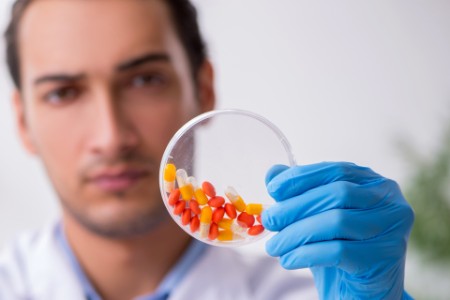Improving pricing environment
Generics pricing came under pressure in early 2014, when double-digit price increases ebbed, according to an August 2019 Barclay’s research report.1 In fact, from late 2015 through mid-2019, prices actually fell, the report shows. A double-digit increase in US Food and Drug Administration (FDA) approvals through the Abbreviated New Drug Application (ANDA) (17% increase over 2014 to 2018), competition from lower-cost products in India, regulatory and public scrutiny over prices, and consolidation of group purchasing organizations combined to pressure prices and created excess capacity.
Since hitting the bottom in mid-2017, price declines have eased. By early 2019, there were even some months in which prices increased. A combination of factors has helped stem pricing declines. The onetime impact of large buying groups driving down prices has passed through the system. While prices are still lower, they aren’t falling as steeply as they did in the middle of the last decade. At the same time, leading manufacturers have rationalized costs and pruned their product portfolios. For example, in 2018, one large pharma sold its European generics business to a private equity investor. Meanwhile, Teva has said it has cut costs for the past three years, reducing about $2.5 billion in cost out of a $3 billion cost-reduction goal.2
Companies have also discontinued less-profitable treatments. In fact, according to the FDA, the number of drugs discontinued in 2018 was 132, up from 18 in 2017.
More generics approvals, but also more shortages
At the same time, more injectable treatments have reached generic status, helping to offset persistent deflation in generic oral solids. These treatments are non-commoditized and offer higher margins and long-duration opportunities to unbranded generics manufacturers. In some cases, patients take treatments for months or years.
Shortages of injectable treatments for diseases such as cancer, sepsis and other life-threatening conditions, in part due to manufacturing issues at specific companies, also have supported prices. The outbreak of COVID-19, which is disrupting the global supply chain for pharmaceuticals, also is resulting in shortages of generics, given China produces many of the active pharmaceutical ingredients used to make these products. For other diseases, pricing support comes from companies either withdrawing from treatments or delaying the launch of less-profitable treatments, even after ANDA approval is received.
To be sure, not all pricing pressures have been eliminated. Branded players are responding with heavy rebating and patent protection strategies that could pare opportunities in the biosimilar space for generics competitors. Their relationships with pharmacy benefits managers also can block generics competitors, while some branded players have also introduced their own generic versions. Meanwhile, several major hospital systems in the US have combined to create a non-profit company to produce a stable supply of generic drugs.
Pressure from the legislative landscape is also top of mind this election year. Drug pricing is likely to be a high-profile topic as issues such as “pay for delay” have put a stigma on the industry in the past.
Still, the average operating margin for the top 15 US generics manufacturers is expected to increase between 20% to 23% by 2023, up from 17% in 2018, according to an EY analysis. This could give manufacturers more firepower to make acquisitions. Additional factors that could support consolidation are that many companies have worked to reduce the debt incurred in the last round of industry consolidation, while firms are also looking to fend off excess capacity that has been created by pruning less profitable commoditized products.


